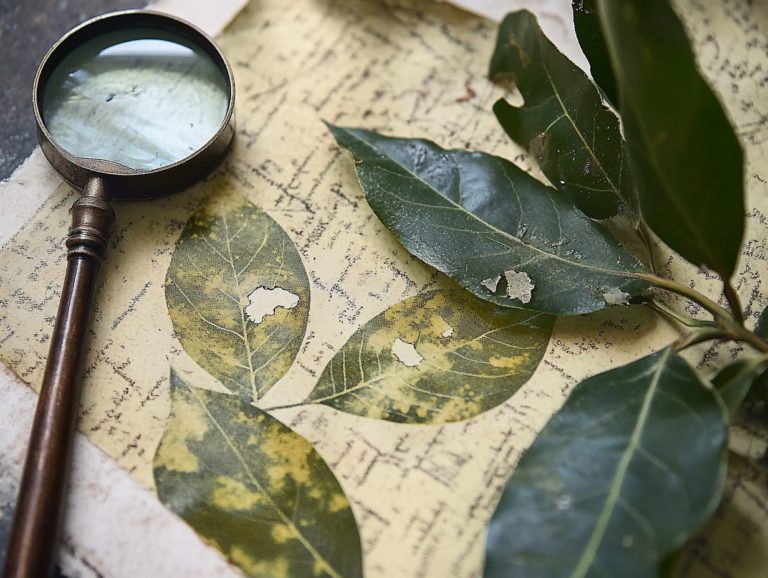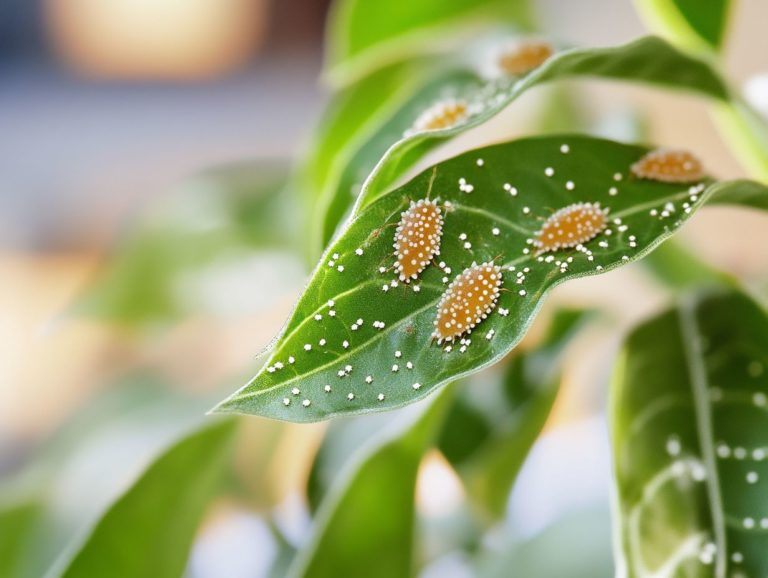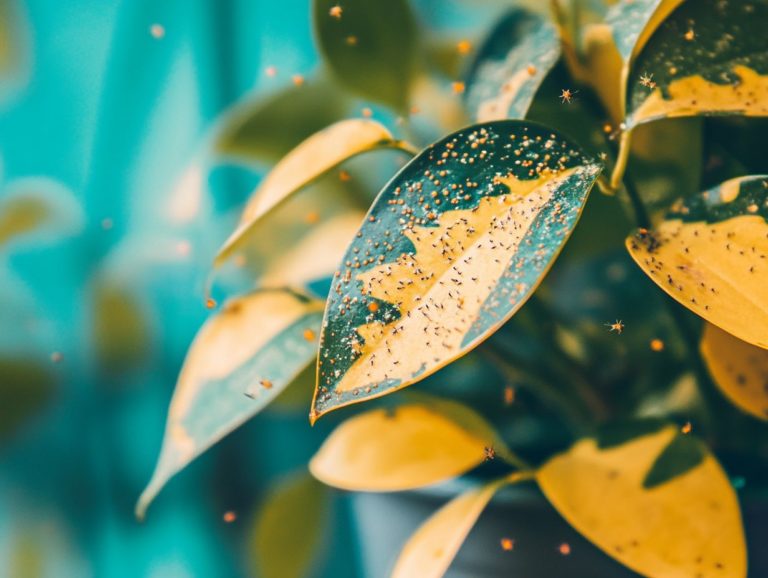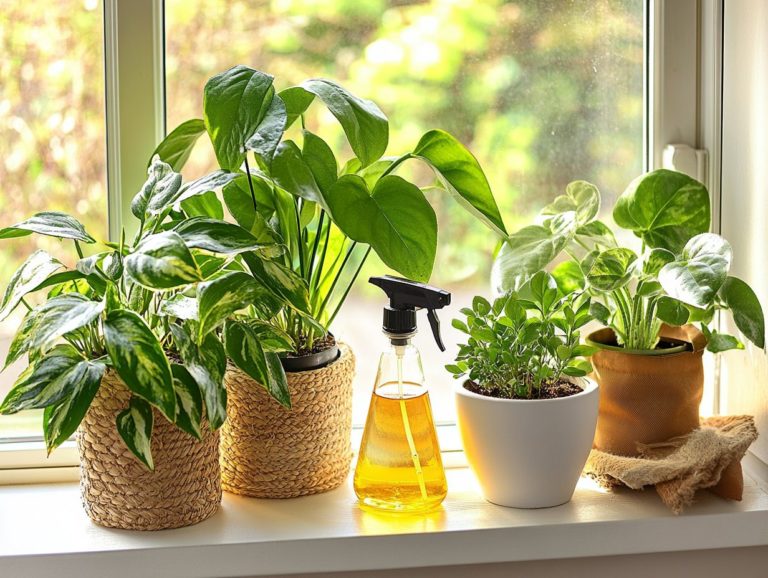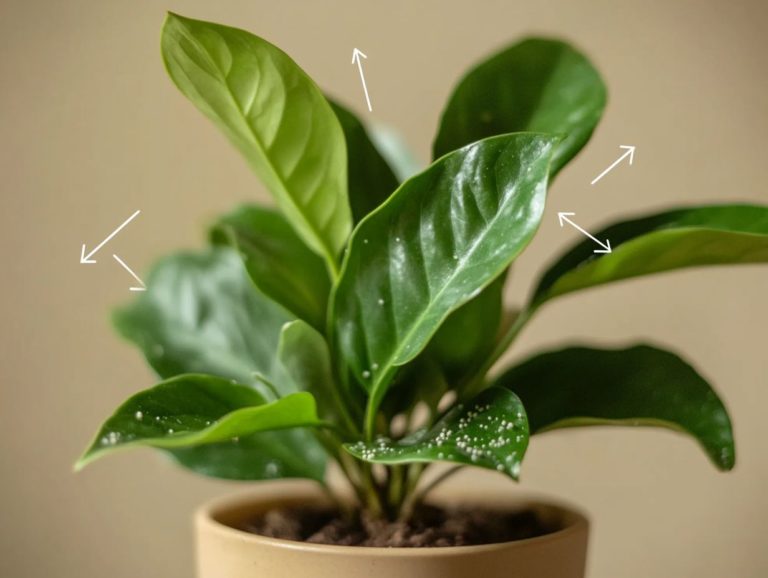How to Treat Thrips in Houseplants
Houseplants infuse your home with warmth and beauty, but they can also fall prey to pests like thrips. These tiny insects can wreak havoc on your greenery, leaving behind unsightly damage that can be disheartening.
In this article, you ll discover what thrips are, how to identify them, and effective strategies for preventing and treating infestations. You ll also learn how to restore plants affected by these pests and the precautions necessary to ensure both you and your plants remain safe.
Get ready to save your houseplants and bring back their vibrant charm!
Contents
What You Need to Know:
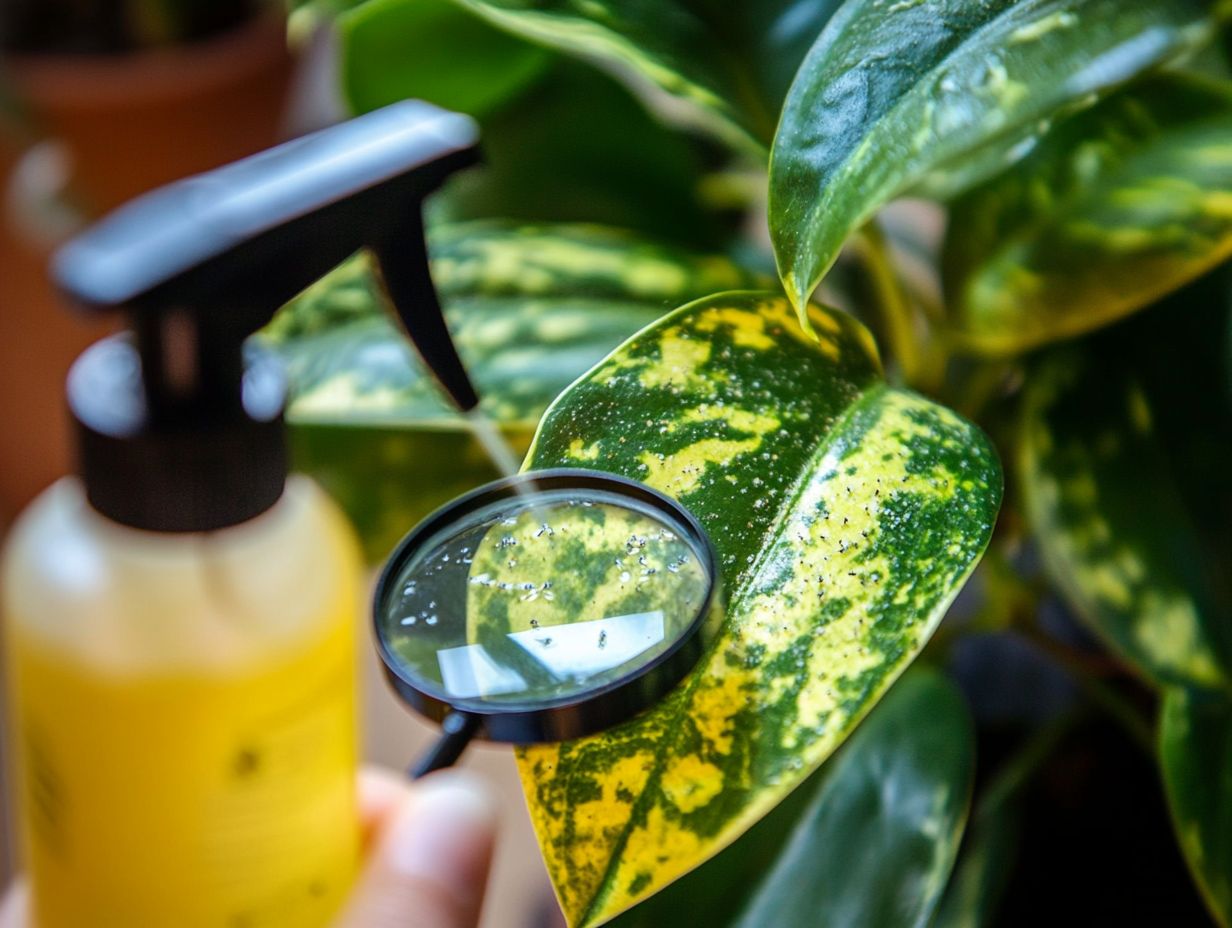
- Thrips are small, winged insects that can damage houseplants if left untreated.
- Proper plant care and using natural predators can help prevent thrips infestations.
- If your houseplants are already infested with thrips, consider using organic or chemical control methods to treat them and repair any damage.
Understanding Thrips and Their Impact on Houseplants
Thrips are tiny, slender insects that can cause quite a stir among your beloved houseplants, including favorites like Monstera deliciosa, Fiddle Leaf Fig, and Philodendron. When you spot them, it usually means an infestation is lurking. If you don t act quickly, the damage can become significant.
Adult thrips feed on plant tissues, leaving behind unmistakable signs like black spots and curled leaves.
Understanding their lifecycle is essential for maintaining the health of your plants. These pests reproduce at lightning speed and can infiltrate your indoor oasis before you know it. The impact of thrips isn’t just about looks; if unchecked, they can weaken your plants and jeopardize their overall health.
What are Thrips?
Thrips are small, elongated insects that belong to the order Thysanoptera, with the Western Flower Thrips being one of the most notorious species affecting houseplants. These pests typically measure between 1 to 2 millimeters in length, characterized by their slender bodies that can vary from yellow to black, depending on their species and life stage.
The life cycle of thrips unfolds through egg, larval, and adult phases. They lay their eggs in plant tissues, often leading to significant damage as the larvae emerge and start feeding. The adults sport fringed wings and are known for their rapid movements. This frantic activity often results in distorted growth on your plants, a telltale sign of how they suck the juices from plants.
Commonly found in indoor plants, these insects tend to congregate on foliage, causing stippling and even transmitting plant viruses.
Identifying Thrips in Houseplants
Identifying thrips in your houseplants requires a keen eye for specific signs of damage and pest presence, particularly on the undersides of leaves.
Watch for distinctive leaf damage, which may appear as silvery streaks or curled edges clear indicators of feeding activity. Also, be on the lookout for tiny black spots that resemble pepper; these could be thrips feces.
During your thorough inspection, remain vigilant for adult thrips or their larvae, which are typically tiny and elongated. To enhance your pest detection efforts, consider using yellow sticky traps. These traps are effective as they attract adult thrips, allowing you to monitor infestations continuously and refine your pest management strategies accordingly.
Preventing Thrips Infestations
Preventing thrips infestations demands a proactive approach to plant care. Emphasize proper maintenance and create environmental conditions that foster healthy growth, ensuring your plants thrive and remain resilient against pests.
Proper Plant Care and Maintenance
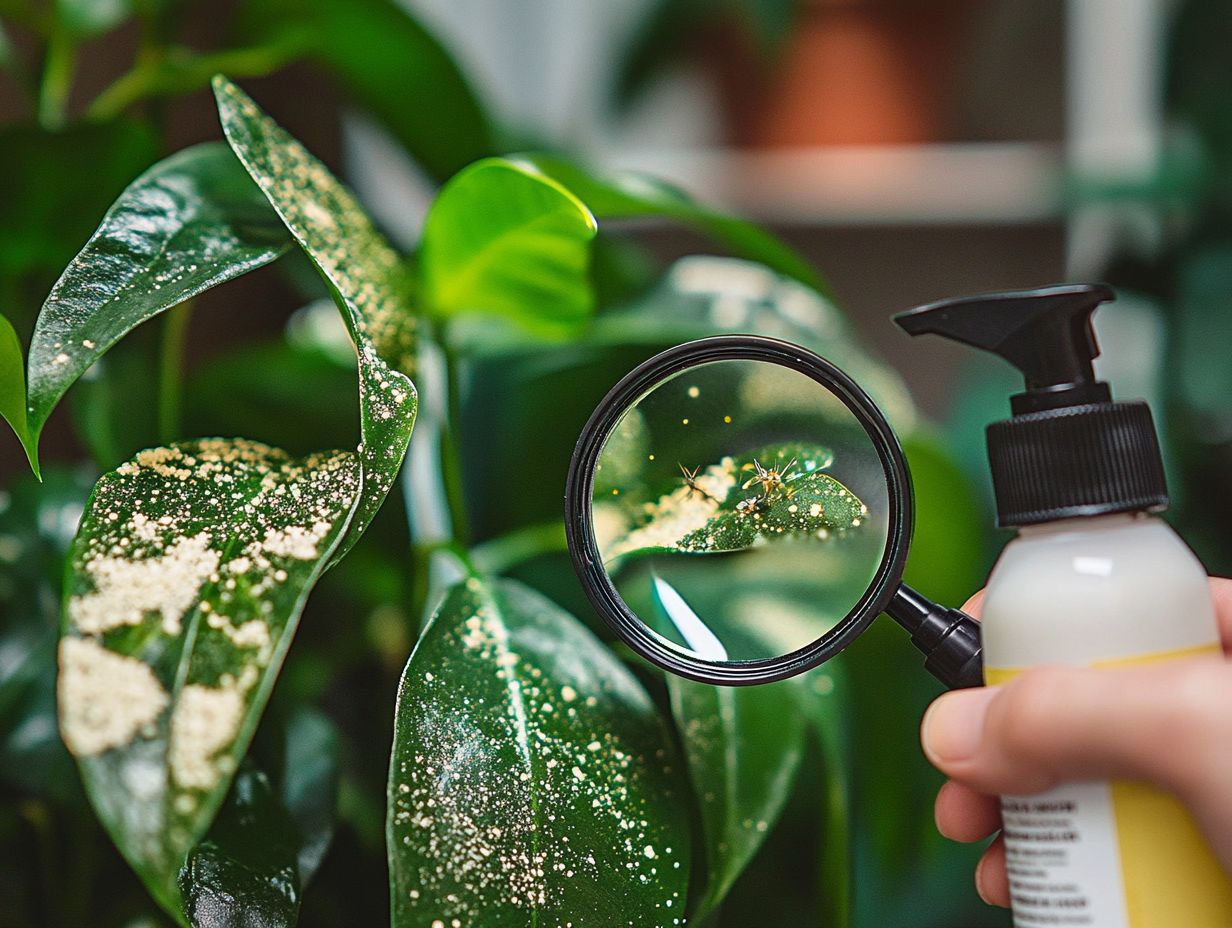
Proper plant care and maintenance can dramatically reduce the risk of thrips infestations in your houseplants. This allows them to thrive without the interference of pests.
To achieve this, establish a regular watering routine tailored to the specific needs of each plant. Over or under-watering can stress your plants, inviting pests to move in.
Maintaining optimal soil health is equally important. Using nutrient-rich potting mixes ensures your plants have essential resources for robust growth.
Don t overlook the importance of regularly cleaning the leaves. Wiping them down keeps dust at bay, which blocks sunlight and attracts unwanted pests.
By combining these mindful practices, you can promote healthy plants and minimize the risk of thrips outbreaks. Consider introducing tiny good bugs that eat pests as a preventive measure.
Using Natural Predators
Utilizing natural predators like Amblyseius Cucumeris is highly effective for managing thrips populations in your houseplant environments. These beneficial mites help maintain healthier plants while minimizing your reliance on chemical pesticides.
These predatory mites thrive on thrips, significantly reducing their numbers without harming beneficial organisms. Simply introduce Amblyseius Cucumeris into your growing environment by releasing them onto affected plants or the nearby soil.
You can also use natural pesticides for added protection. When combined with these predators, natural sprays create a holistic pest management system that allows your houseplants to flourish without the risks associated with synthetic chemicals.
Treating Thrips Infestations
Treating thrips infestations effectively calls for an exciting mix of methods. This includes applying neem oil and insecticidal soap.
Customize this approach to meet the unique care requirements of your plants, ensuring optimal results and health.
Organic and Chemical Control Methods
You have a range of organic and chemical control methods available for managing thrips infestations. This includes neem oil, insecticidal soap, and various essential oils.
Neem oil, extracted from the seeds of the neem tree, disrupts the life cycle of thrips. It is effective both as a preventative measure and a targeted treatment for active infestations.
Insecticidal soap works by suffocating pests upon contact. Apply it during the early morning or late evening to protect beneficial insects.
Essential oils like peppermint or clove serve as natural repellents, creating an inhospitable environment for these pests.
While chemical insecticides may deliver quicker results, many find organic methods safer for the environment. This fosters a healthier ecosystem.
Regardless of the control method you choose, it s vital to adhere to safety precautions. Wear protective gear and ensure proper ventilation when applying treatments like cold pressed neem oil or insecticides.
Dealing with Thrips Damage
Addressing thrips damage requires more than just tackling the infestation. It also involves nurturing and repairing the affected plants to rejuvenate their health and vitality.
Techniques such as washing plants and providing proper plant maintenance are essential.
Start your pest battle now with neem oil or insecticidal soap!
How to Repair and Revive Affected Plants

To repair and revive your plants, start by checking how badly the leaves are hurt. This helps you decide which leaves to trim for healthier growth.
Pay close attention to the most damaged areas and cut away any brown or tattered leaves. This encourages new growth.
Next, enhance your watering schedule and ensure your plants receive enough nourishment through quality fertilizers. It’s also important to consider your water source to prevent issues related to thrips feeding. Additionally, be proactive in managing whiteflies on houseplants to protect your plants from further pest problems.
Equally important is placing your plants in optimal light conditions! Ensure they get enough indirect sunlight to help them make their food using sunlight. Regularly cleaning the leaves to remove dust and debris is vital, as it allows the plant to breathe and absorb light more effectively.
Keep an eye out for signs of new infestations. Look for adult thrips or their larvae to ensure your plants remain healthy and robust!
Precautions and Safety Measures
Using the right precautions is crucial when dealing with thrips. It protects both your plants and your health.
Protecting Yourself and Your Plants
Understanding the vital safety measures when applying treatments like neem oil, insecticidal soap, and other insecticides is key to managing thrips effectively.
Equip yourself with essential protective gear think gloves, masks, and goggles to minimize exposure to harmful chemicals. Ensure proper ventilation during application to safeguard your health and enhance the treatment’s effectiveness!
Paying careful attention to product labels provides valuable insights and specific instructions. This balanced approach safeguards your plants while reducing risks for you, creating a harmonious environment where both plants and people can thrive.
Frequently Asked Questions
What exactly are thrips?
Thrips are small, winged insects that feed on the sap of houseplants. They can harm leaves, flowers, and stems, causing them to turn yellow, dry up, or fall off.
How do I spot thrips on my houseplants?
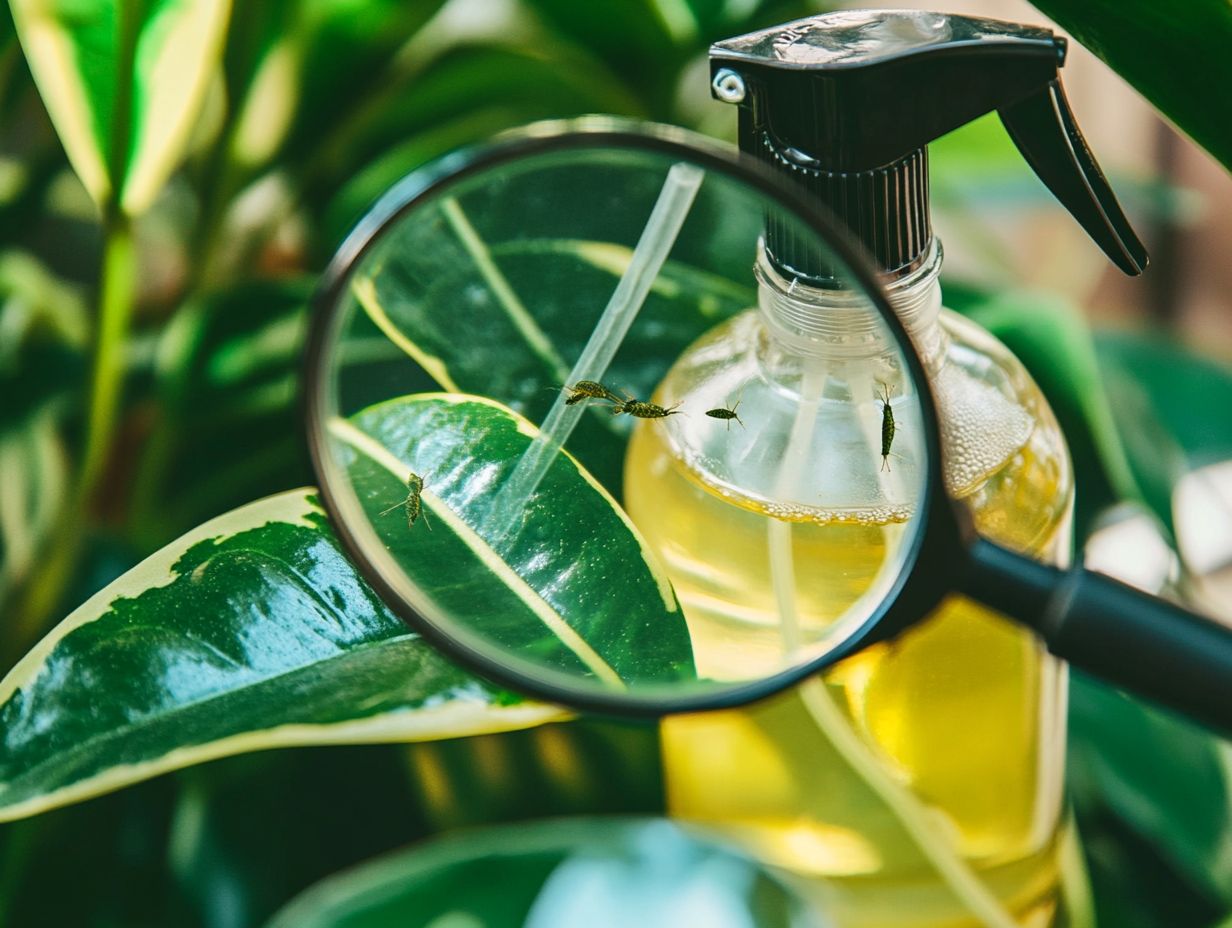
You may notice tiny, dark insects crawling on the leaves of your plants or see damaged leaves and flowers. Thrips also leave behind small black droppings on the leaves.
What are some natural ways to treat thrips in houseplants?
Some natural methods to treat thrips include using neem oil, insecticidal soap, or introducing natural predators like ladybugs or lacewings.
Can I use chemical pesticides to treat thrips?
Yes, there are chemical pesticides specifically designed for treating thrips in houseplants. However, it s important to follow the instructions carefully and use caution, as these products can be harmful to humans and animals. You should also consider using natural pesticide options to minimize risks.
How can I prevent thrips from infesting my houseplants?
To prevent thrips, regularly inspect and clean your houseplants. Avoid overwatering, as thrips are attracted to moist environments. Quarantine new plants before adding them to your collection to ensure they are not carrying thrips.
Can thrips spread to other plants in my home?
Yes, thrips can easily spread to other plants in your home. Isolate any plants that show signs of infestation to prevent the spread to other plants!

